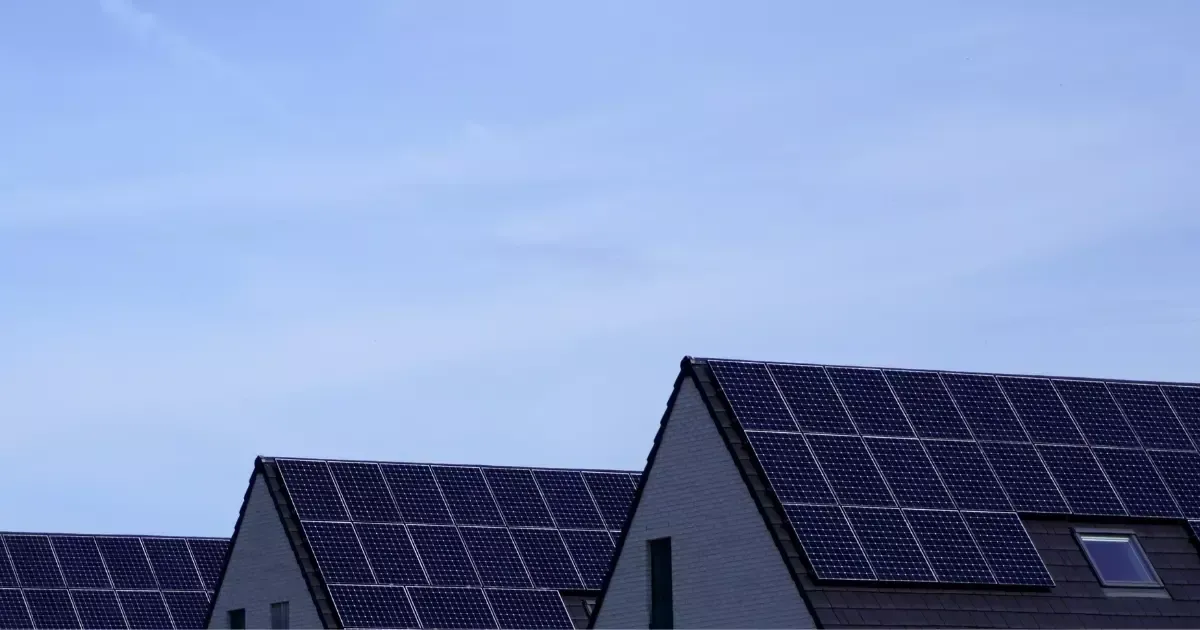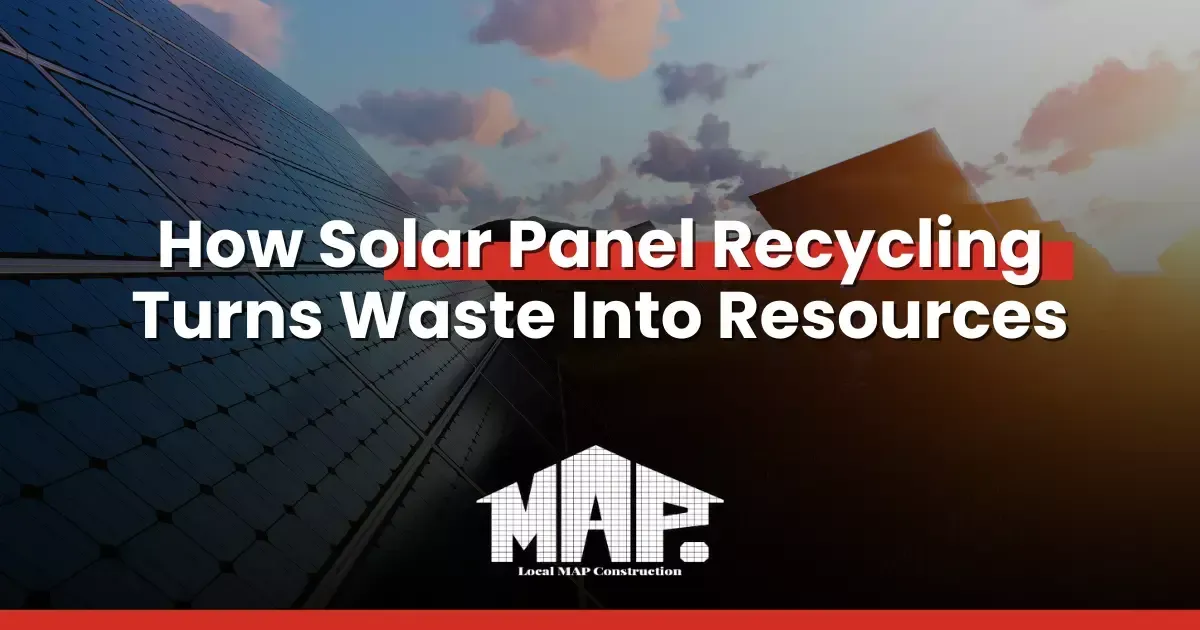Solar panel recycling is sparking more interest as thousands of panels reach the end of their life every year. Many homeowners wonder what really happens when end-of-life solar panels come off rooftops and solar farms. These panels are not just scrap. They are packed with valuable raw materials like glass, metals, and silicon solar cells that should never end up in landfills. By choosing to recycle, these parts are recovered and given a second life in the solar industry. It leads to lower hazardous waste, better resource conservation, and a growing circular economy that serves both people and the environment.
Why Does Solar Panel Recycling Important for Homeowners?

For many homeowners, investing in solar power systems was a step toward lowering bills and reducing their impact on climate change. Solar panel recycling keeps valuable parts in use instead of adding to electronic waste, giving families peace of mind. It also supports property value since future buyers often ask about a home’s green footprint and the disposal of outdated photovoltaic panels. Recycling shows responsibility, builds trust, and meets rising local and federal recycling rules.
What Is Solar Panel Recycling?
Solar panel recycling is the process of breaking down old photovoltaic panels into separate parts and reusing them. Instead of throwing them away, experts collect glass, aluminum frames, copper wire, and silicon dust for reuse. Modern recycling processes focus on the safe handling of toxic metals and polymer layers to prevent environmental harm. With help from recycling facilities, the recovered materials return to solar manufacturers or other industries. In short, it turns solar panel waste management into recycling opportunities.
What Are The Steps To Recycle Old Panels?

Recycling old panels involves several structured steps that make materials recovery efficient and safe. Each stage in these recycling technologies is designed to handle silicon-based PV panels, rare materials, and even universal waste carefully. This system helps reduce solar waste while supporting the recycling industry. Read more to know how it works.
Step 1: Collection and Transportation
Old solar module units are collected from homes, businesses, and e-waste sites. Each panel is handled with care to prevent breakage. Racking equipment is used during loading and transport. Panels arrive at recycling facilities in good condition.
Step 2: Inspection and Testing
Specialists check the panels to see if they can be reused as PV modules. Some units qualify for refurbishing to extend their lifespan. Panels that cannot be reused are sent to recycling. This step keeps valuable resources in use longer.
Step 3: Separation of Materials
Panels are dismantled into glass, copper wire, polycrystalline silicon, and polymer layers. Separation systems improve efficiency in breaking down each material. Sorted parts are moved into specific processing streams. This step prepares the materials for recycling.
Step 4: Mechanical Recycling
Dismantled parts are shredded and processed. Glass is crushed into reusable pieces for manufacturing. Aluminum frames and metals are recovered for smelting. These recycled materials are used by solar cell producers and other industries.
Step 5: Chemical and Thermal Recovery
Some parts need advanced recovery methods. Chemical and thermal processes extract rare earth elements and purified silicon. These outputs are high in value and ready for reuse. They return to solar manufacturers and the clean energy supply chain.
What Are The Benefits of Solar Panel Recycling?

The advantages of solar panel recycling extend far beyond individual homes. Recycling keeps panels out of landfills, reducing waste and protecting natural resources. It also creates new opportunities in the recycling industry, opening green job prospects and strengthening local economies. At the same time, recycling supports the solar market by recovering key materials and lowering long-term costs.
Environmental Benefits
Recycling photovoltaic solar panels prevents toxic metals from contaminating soil and water. This protects wildlife, preserves ecosystems, and reduces environmental risks. By reusing valuable materials, recycling lowers the demand for mining rare resources. These efforts make the energy sector cleaner and more sustainable.
Economic Benefits
Recycling creates cost savings for solar manufacturers and jobs in the recycling market. It also helps keep solar panel prices steady by expanding recycling opportunities. Programs like the National PV Recycling Program add growth and stabilize the market.
Energy Industry Benefits
The Solar Energy Industries Association supports recycling to stabilize the supply chain. This keeps solar energy affordable and sustainable. Recycling also aligns with global efforts, such as those of the International Renewable Energy Agency, to expand the adoption of renewable energy alongside offshore wind.
When Should You Hire a Professional for Solar Panel Recycling?
Hiring a professional is important when solar panels reach end-of-life status or contain toxic metals that need safe handling. Certified experts follow strict recycling regulations and may participate in programs such as the Certified Appliance Recycler Program. They are trained to manage photovoltaic module recycling while protecting your home from hazardous waste. Working with a qualified service keeps the process compliant and protects your health and property.
Frequently Asked Questions
Can all solar panels be recycled?
Yes. Most silicon-based PV panels and thin-film PV modules can be recycled. The process used depends on the recycling technologies available in each region.
Is solar panel recycling expensive?
Costs vary, but many programs offer support through energy tax credits or partnerships with solar manufacturers. Some states classify panels as universal waste, which lowers disposal fees.
What happens if I don’t recycle my solar panels?
Panels may end up as electronic waste, adding to solar waste, and releasing toxic metals into the environment. Landfilling also wastes rare earth elements that could be recovered.
Can my old solar panels be reused instead of recycled?
Yes. If testing shows the panels still work, they can be refurbished and used again as solar modules. This reduces the demand for new photovoltaic panels and limits waste.
How do I find a trusted solar panel recycling service?
Look for certified providers connected with the National PV Recycling Program or recycle and dispose networks. Choose facilities that show strong recycling efficiency and clear processes.
Wrapping
Solar recycling is the key to managing the growing stream of solar panel waste. As more panels reach retirement, the recycling industry captures valuable rare materials and protects the planet from growing electronic waste. We all play a vital role by recycling responsibly and keeping photovoltaic panels out of landfills. With support from the Department of Energy and programs like First Solar, the global recycling market continues to grow, improving efficiency, expanding capacity, and reducing hazardous waste in communities.
At
Local Map Construction, we provide guidance on safe solar panel recycling. Call us today at 970-218-1620 to discuss your options and connect with trusted recycling resources. Together, we can protect the environment, strengthen the circular economy, and create a cleaner future for all of us.

